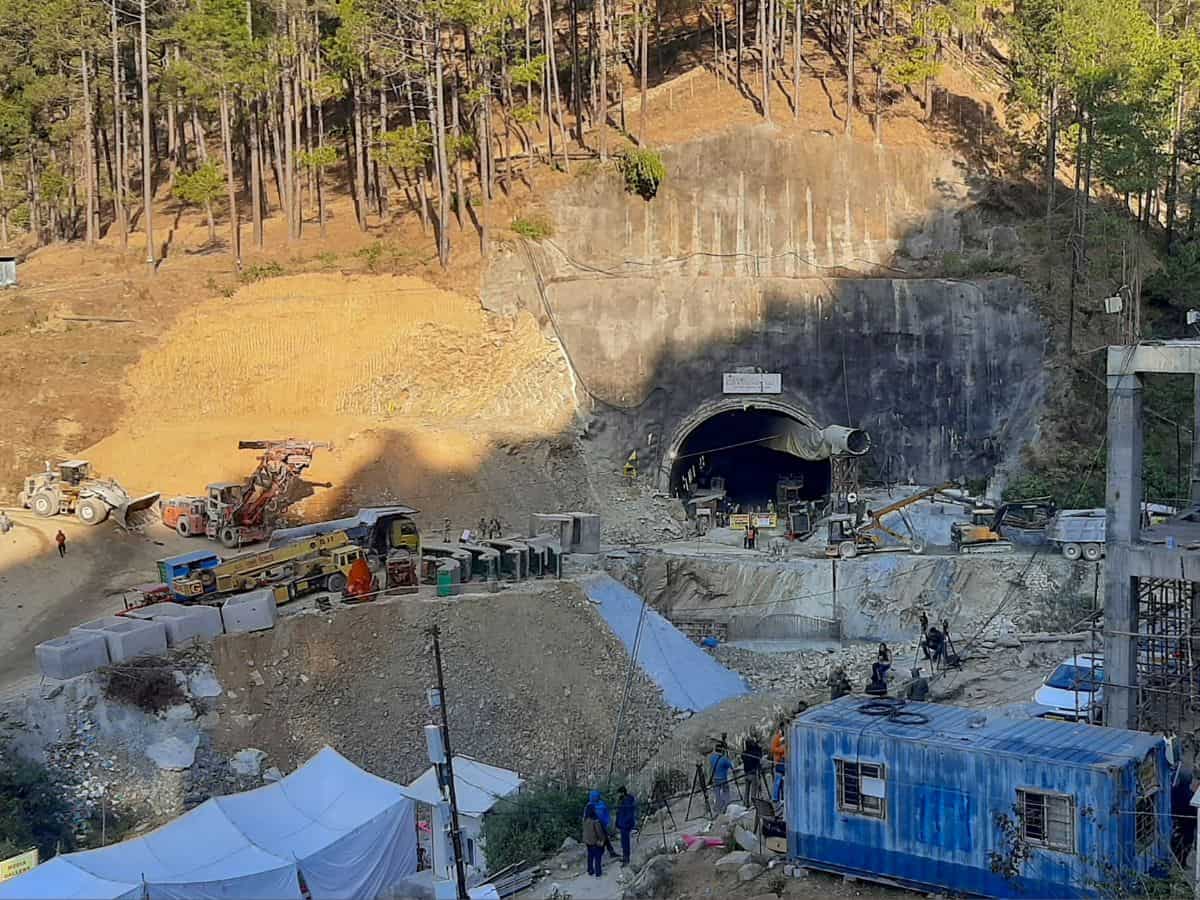
Uttarkashi: Rescue operations to evacuate 41 workers trapped in Uttarakhand’s Silkyara tunnel entered the final stretch early Thursday after a late-night hitch when the machine drilling the escape passage through the rubble hit a hard obstacle.
An iron mesh which came in the way of the auger machine drilling through the rubble at the tunnel has been removed, officials said on Thursday.
“The problem which was created due to the iron mesh has been solved. The mesh has been cut by the use of the iron cutters,” former advisor to the prime minister’s office Bhaskar Khulbe said.
The drilling of 800 mm diameter steel pipes through the rubble had to be halted for some hours after hitting the hurdle late Wednesday.
With the hurdle removed, the process of pipe pushing has resumed, officials said.
All arrangements have been made to provide immediate medical care to the 41 trapped workers after they are evacuated, officials said.
A 41-bed separate ward has been readied at the Community Health Centre in Chinyalisaur for Silkyara tunnel evacuees and 41 ambulances wait outside the tunnel to rush them there as soon as they crawl out.
Till 6 pm on Wednesday, up to 44 metres of the escape pipe had been inserted into the debris, an official update said in Delhi.
Earlier, officials said the American-made auger machine had to drill through a 57-metre stretch of debris to reach the 41 workers, who were trapped when a portion of the under-construction tunnel collapsed 11 days ago.
The drilling from the Silkyara end was put on hold on Friday afternoon when the auger machine encountered a hard obstacle around the 22-metre mark, creating vibrations in the tunnel that caused safety concerns.
The drilling resumed around midnight Tuesday.
As the machine drills through, six-metre sections of steel pipes, just under a metre wide, are pushed into the escape passage. Once the pipeway reaches the other end, the trapped workers are expected to crawl out.



